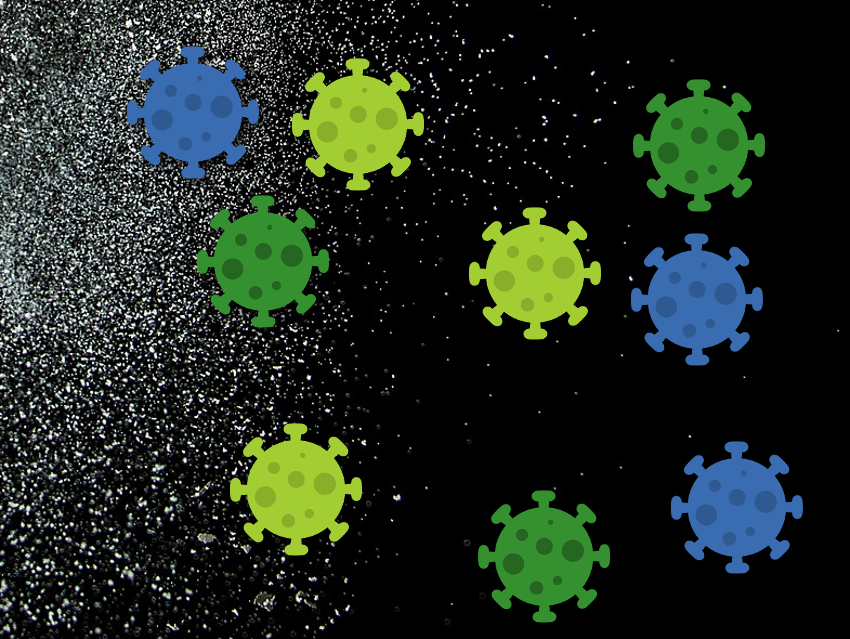Influenza viruses cause seasonal outbreaks that result in large numbers of deaths each year. It is known that influenza viruses can spread directly from person to person via respiratory droplets, via aerosols of respiratory droplets from an infected person that another person breathes in, or via contaminated surfaces that a person touches and then transfers the virus to the mouth, nose, or eyes. However, it is unknown how much each of these mechanisms contributes to the spread of influenza. It had also been unclear whether airborne particles other than those stemming from respiratory droplets can transmit the virus.
Nicole M. Bouvier, Icahn School of Medicine at Mount Sinai, New York, USA, and colleagues have investigated the nature of airborne particles that pass between animals in a guinea pig model of influenza virus transmission. Such animal models are commonly used to study viral spread: One animal is infected with the virus of interest, and the cages of this infected animal and another, healthy animal are then set up to share a common air space. In this case, the team first measured the number of airborne particles produced by uninfected guinea pigs and found that the movement of the animals generated a lot of aerosolized dust particles. Respiratory droplets made up a much smaller fraction of the total airborne particles emitted by the guinea pigs.
The team then wanted to find out whether the aerosolized dust particles produced by the animals could transmit influenza without any viral replication in the donor animal. They applied an influenza virus to the fur of guinea pigs that are immune to the virus and placed their cages next to those of healthy, non-immune animals. They observed virus transmission in three of twelve animal pairs. This shows that respiratory droplets are not the only possible source of airborne transmission; virus traveling on airborne particulate matter can also be infectious.
The researchers also tested whether dust and fibers from an inanimate object can transmit influenza: They applied the virus to paper tissues, dried them, and then created dust by crumpling, folding, and rubbing the tissues. The tissues released up to 900 particles per second with breathable sizes. The virus traveling on these particles was still able to infect cell cultures. According to the team, the contribution of aerosolized particles to the transmission of influenza and other respiratory viruses, such as SARS-CoV-2, merits further scientific investigation.
- Influenza A virus is transmissible via aerosolized fomites,
Sima Asadi, Nassima Gaaloul ben Hnia, Ramya S. Barre, Anthony S. Wexler, William D. Ristenpart, Nicole M. Bouvier,
Nat. Commun. 2020.
https://doi.org/10.1038/s41467-020-17888-w




